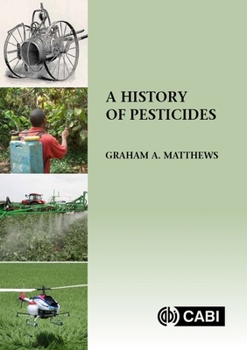A History of Pesticides
In this fascinating book, Graham Matthews takes the reader through the history of the development and use of chemicals for control of pests, weeds, and vectors of disease.Prior to 1900 only a few chemicals had been employed as pesticides but in the early 1940s, as the Second World War raged, the insecticide DDT and the herbicide 2-4-D were developed. These changed everything. Since then, farmers have been using a growing list of insecticides, herbicides and fungicides to protect their crops. Their use has undoubtedly led to significant gains in agricultural production and reduction in disease transmission, but also to major problems: health concerns for both users of pesticides and the general public, the emergence of resistance in pest populations, and environmental problems.The book examines the development of legislation designed to control and restrict the use of pesticides, the emergence of Integrated Pest Management (IPM) and the use of biological control agents as part of policy to protect the environment and encourage the sustainable use of pesticides.Finally, the use of new technologies in pest control are discussed including the use of genetic modification, targeted pesticide application and use of drones, alongside basic requirements for IPM such as crop rotations, close seasons and adoption of plant varieties with resistance to pests and diseases.
Format:Hardcover
Language:English
ISBN:1786394871
ISBN13:9781786394873
Release Date:October 2018
Publisher:Cab International
Length:312 Pages
Weight:2.05 lbs.
Dimensions:0.9" x 6.8" x 9.8"
Customer Reviews
0 rating





